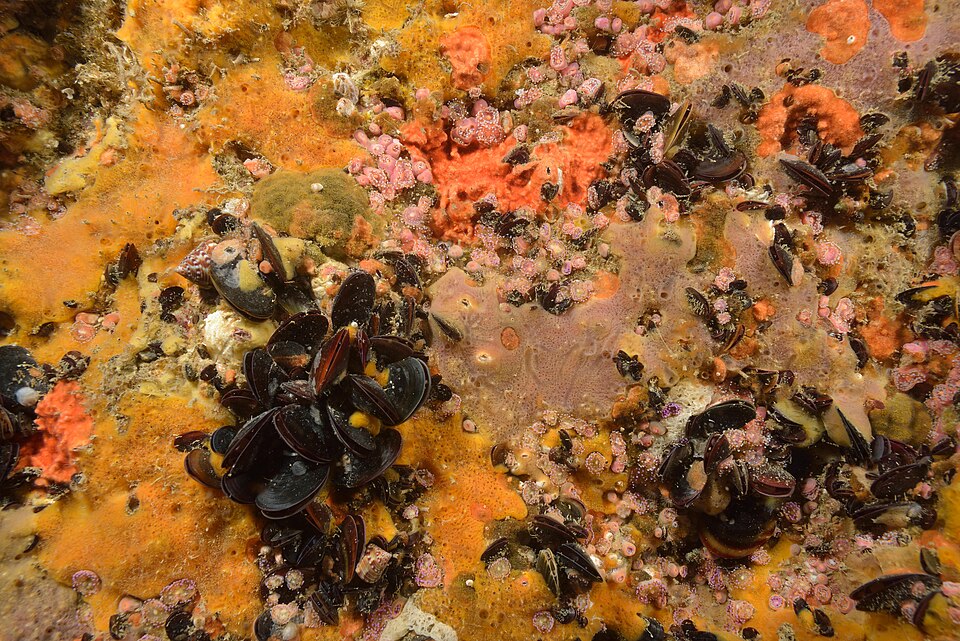Impact of Substrate Color on Seawall Biodiversity: A Study Analysis

In a groundbreaking study published in the Journal of Applied Ecology on July 29, 2025, researchers have unveiled significant insights into how substrate color affects marine biodiversity in coastal environments, particularly on artificial structures such as seawalls. Led by Dr. Hannah Cunningham, a marine ecologist at the University of Sydney, the research emphasizes the critical role that color plays in species colonization and community development in marine habitats heavily influenced by urbanization.
Marine construction, including seawalls and other coastal infrastructures, has proliferated globally, now accounting for over 50% of urban shorelines. While these structures serve essential protective functions for human settlements, they often substitute natural ecosystems such as seagrasses and rocky shores with artificial materials like concrete, leading to decreased biodiversity. The integration of eco-engineering practices seeks to mitigate these detrimental effects by incorporating ecological principles into marine infrastructure.
Traditionally, eco-engineering efforts have focused on modifying the physical and chemical properties of surfaces to enhance habitat diversity. However, the significance of substrate color had largely been overlooked until now. According to Dr. Sarah Johnson, a marine biologist at Harvard University, "Color can dramatically influence how organisms interact with their environment, affecting everything from settlement patterns to predation risks."
The study, conducted from February 2022 to March 2023, involved a long-term field experiment at two distinct sites in Sydney Harbour, specifically Kurraba Point and McMahons Point. Researchers deployed 160 concrete panels of varying colors—green, yellow, red, and grey—designed to mimic local environmental hues. The color choices were strategic; yellow and red panels emulated local sandstone, while green represented algal biofilms, and grey mimicked standard concrete substrates. All panels were standardized for reflectance to ensure that the observed effects could be attributed solely to color.
Findings revealed that substrate color significantly influenced benthic community development, with effects varying by tidal elevation and time. At the high intertidal elevation, the color effects were minimal and transient, whereas at the low intertidal elevation, more pronounced and lasting impacts on community structure were observed. Notably, red panels attracted a different community composition with a higher prevalence of Ulva australis and Amphibalanus variegatus, while brown algae demonstrated lower abundance on red panels, aligning with prior studies indicating larval settlement preferences for red substrates.
The implications of this research are profound for the future of marine infrastructure design. By incorporating specific colors into the design of artificial substrates, eco-engineering projects can create more ecologically compatible environments that promote biodiversity. As Dr. Mark Thompson, lead researcher of the study, noted, "By matching artificial structures to the natural colors of the surrounding environments, we can significantly enhance ecological resilience in coastal areas."
The persistent effects of color on community dynamics underscore the potential for color selection to be a cost-effective strategy for promoting biodiversity. Future research is encouraged to further explore mechanisms behind species-specific color preferences and their interactions with various environmental factors.
In conclusion, this study highlights the importance of substrate color in shaping marine biodiversity on artificial structures. By advancing our understanding of these dynamics, the field of eco-engineering can better integrate ecological principles into urban coastal development, ultimately fostering healthier marine ecosystems amidst urban expansion. As urbanization continues to encroach on natural habitats, strategies like these become critical for sustainable coastal management and biodiversity conservation.
Advertisement
Tags
Advertisement





